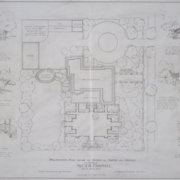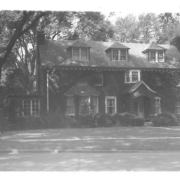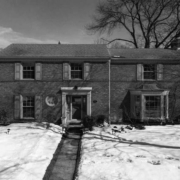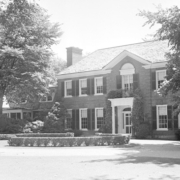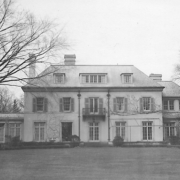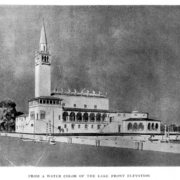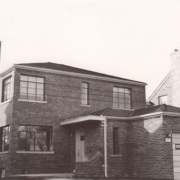Historical Architecture of Grosse Pointe – Ellen Biddle Shipman
Last week we profiled Norval Wardrop, a well-known architect in Detroit at the beginning of the 20th Century. Aside from working on numerous commercial projects he also created fine homes for prestigious clients, including 319 Lincoln in Grosse Pointe. This week we focus on the work of Ellen Biddle Shipman, a nationally renowned landscape architect who was known for her formal gardens, simple clean geometries, and lush planting style. Shipman, throughout her career, created over 650 gardens, including at least 60 in Grosse Pointe – more than any other community in the United States.
Ellen Biddle Shipman was considered a pioneer in her field during the first half of the 20th century. Born in Philadelphia on November 5, 1869, she spent her early childhood in Texas, before moving with her family back to the east coast where she would attend boarding school in Baltimore. Jump forward to 1910 – having recently divorced, Shipman had started to establish herself as a talented garden designer. At the time she was living in New Hampshire close to the Cornish Art Colony, and had recently met architect, and fellow artist Charles A. Platt. It is reported “Charles Platt, who had admired her planting expertise as well as her design skills in remodeling her home, provided informal training to Shipman in design and construction. By 1912, she was collaborating with Platt on gardens across the country, from Seattle to Grosse Pointe, Cleveland, and Philadelphia. Sometimes she replanted existing gardens, but otherwise had full design responsibility.” Source: on https://www.tclf.org/. Image courtesy of: New York Times.

During the early part of her career Shipman’s natural skill as a designer, experience of hands-on gardening, coupled with a strong determination allowed her to break into the largely male dominated field of landscape architecture. Following her collaborative projects with Charles A. Platt her work had begun to receive national recognition. From the 1920’s through to the 1940’s Shipman was at the forefront of landscape design in the United States. Specializing in residential garden design she ran an all-female office in New York, hiring graduates from the Lowthorpe School of Landscape Architecture. The practice designed nearly 600 gardens throughout the country. Research on https://www.tclf.org/ states “during her busiest years her gardens were clustered on Long Island, New York; Winston-Salem, North Carolina; Grosse Pointe, Michigan; Greenwich, Connecticut; Houston, Texas; and Northern Ohio.”
Ellen Shipman in Grosse Pointe
It is apparent Shipman’s earliest projects in Grosse Pointe began around 1910. She teamed up with architect Charles A. Platt to create her most prominent project in Grosse Pointe – the gardens at Alger House (now known as the Grosse Pointe War Memorial). According to research in the book Grosse Pointe War Memorial by Ann Marie Aliotta and Suzy Berschback, Platt invited Shipman to design the gardens at Alger House. It is reported that Platt “wanted Shipman to refine his planting scheme for the entrance to the court and the small pool garden. He also called for a grapevine-cover pergola that drew the eye to the view of Lake St. Clair.” Based on research from Wikipedia we understand “Charles Platt did not know much about horticulture but was highly respected and thought of as the man who could design both the house and garden for a country estate.” It was from Platt himself that Shipman, early on in her career, developed a taste for strong axial garden layouts and tight visual connectivity between house and garden. Source: www.tclf.org. Below are Shipman’s plans for part of the garden at Alger House. Images courtesy of: Grosse Pointe War Memorial by Ann Marie Aliotta and Suzy Berschback. You can read the full story of Alger House (32 Lake Shore) by clicking here.
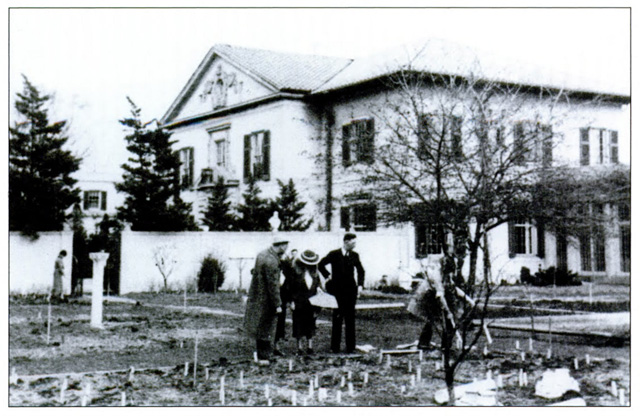
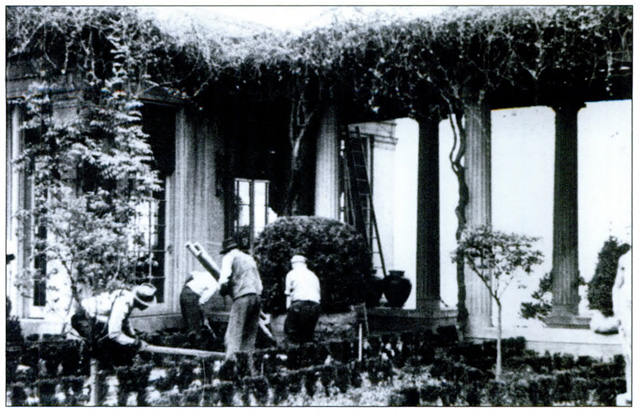

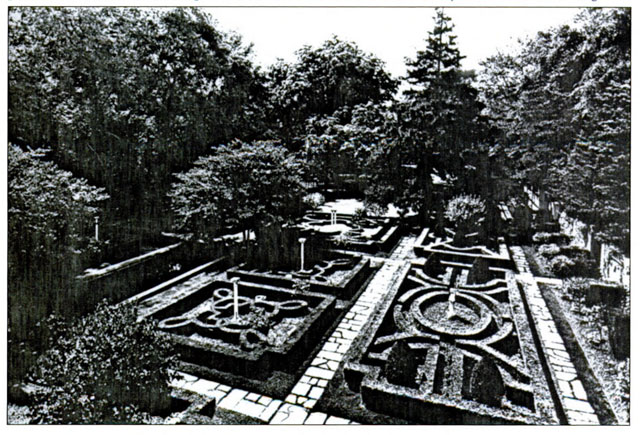
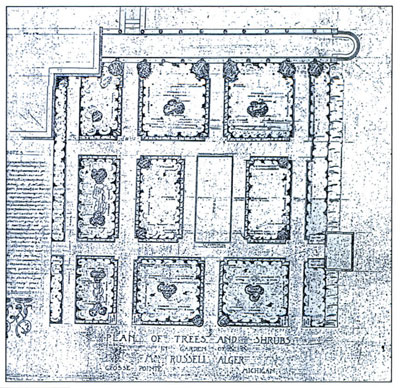
Another of Shipman’s earlier designs in the community was a formal garden at Lake Terrace, the grand estate owned by John S. Newberry. She created a formal garden that would provide a wonderful setting for the many outdoor events and parties the Newberry’s held regularly for friends and family. The photo’s below present some of the stunning floral displays at Lake Terrace. Images courtesy of: Library of Congress.
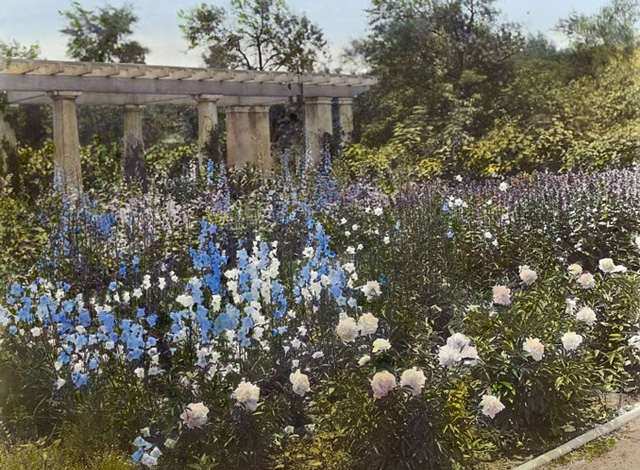
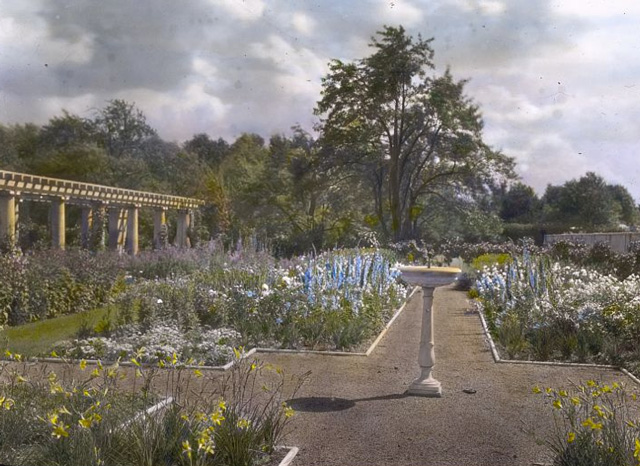

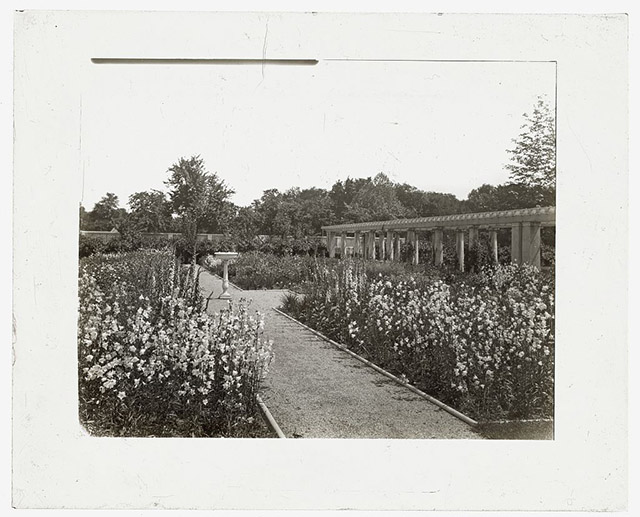
Throughout her career Ellen Shipman was a familiar face in Grosse Pointe. Some of her better-known projects include (dates are approximate) –
- 1910/11 – Alger House (Russell Alger)
- 1910/11 – Lake Terrace, 99 Lake Shore (John. S. Newberry)
- 1924 – 355 Lincoln ( Theodore McGraw, Jr.)
- 1925 – 15366 Windmill Pointe Drive (Julian H. Harris)
- 1928 – 99 Lothrop with Charles A. Platt
- 1922 – 251 Lincoln (Murray Sales House)
- 1923 – 22 Webber Place (Oscar Webber mansion)
- 1925 – Rathbone Place (commissioned by Mrs. M. Campbell)
- 1927 – 447 Lake Shore (Roy D Chapin Home)
- 1929 – 109 Kenwood (Lynn McNaughton Home)
- 1929 – 380 Provencal (Courtenay D. Allington)
- 1934 – Rose Terrace (Anna Thomson Dodge)
- 1934 – 242 Provencal (Mrs. Russell Alger) – now razed
Shipman was particularly active in the community during the 1920’s. She was commissioned to create the gardens at 355 Lincoln (in 1924), one of the most distinguished homes in Grosse Pointe City. The 8,700 sq ft English Manor was designed by the renowned New York based firm Alfred Hopkins & Associates for Dr. Theodore McGraw, Jr. The plans for the garden below are courtesy of: https://digital.library.cornell.edu/
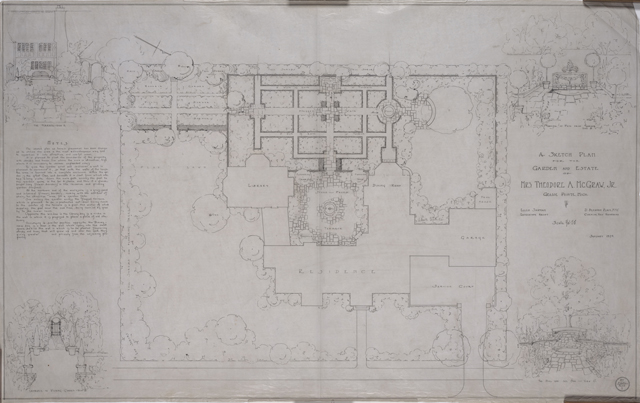
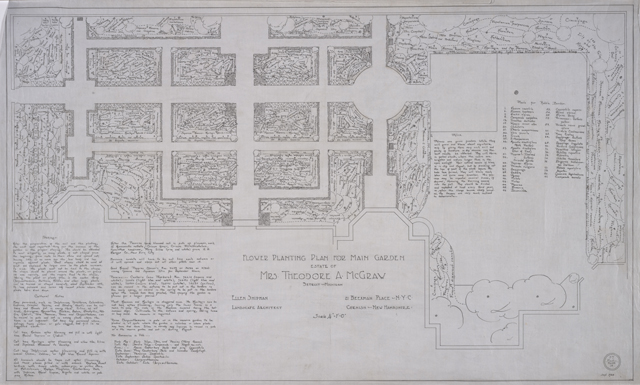

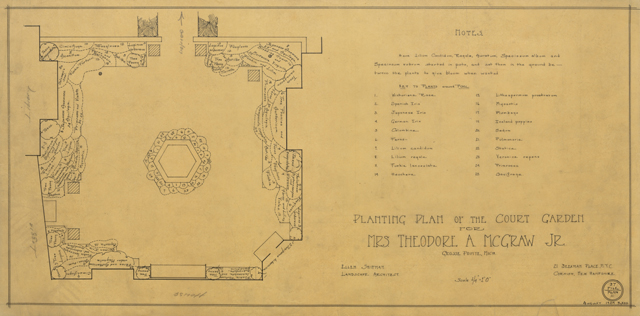
The plan below is for the garden of Mrs. M. Campbell on Rathbone Place (dated May 1925).
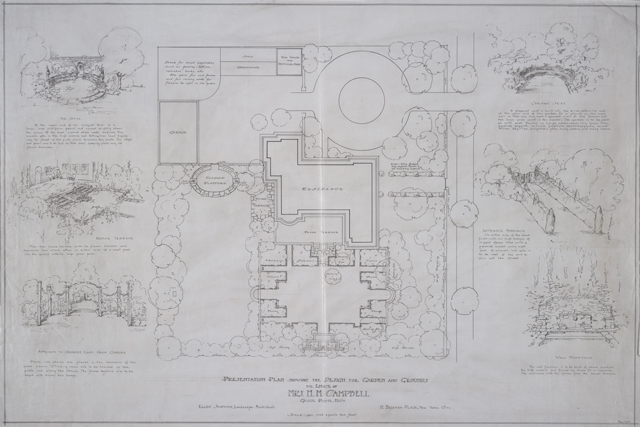
It is reported one of Shipman’s more intricate projects was her work at Rose Terrace (around 1934), where she designed an elaborate floral and sculpture garden that included 150yr old boxwood hedges imported from England – we understand much of Shipman’s work was influenced by the English style.
Among her rare non-residential commissions was her work on Lake Shore Drive during the early 1930’s. Based on the research in The Buildings of Detroit by William Hawkins Ferry, Lake Shore Road was relandscaped into a parkway by Shipman. She was commissioned to carefully landscape the area “so that the motorist was confronted with an ever-changing panorama of great beauty in every season of the year.”
Many national magazines featured Shipman’s work. In 1933, House and Garden named her the “Dean of Women Landscape Architects”. Then, in an interview in 1938, she stated, “until women took up landscaping, gardening in this country was at its lowest ebb. The renaissance of the art was due largely to the fact that women, instead of working over their boards, used plants as if they were painting pictures as an artist.” Source: https://www.tclf.org/
Ellen Biddle Shipman passed away at Ease House, her winter residence in Bermuda, on March 27, 1950. While many of her projects are now lost, the next time you drive along Lake Shore, enjoy the view that Ellen Biddle Shipman helped create – it is a priceless work of art.
*Photos courtesy of the Higbie Maxon Agney archives unless stated.
** Research, information, and data sources are deemed reliable, but accuracy cannot be fully guaranteed.
Written by Katie Doelle
Copyright © 2023 Katie Doelle

